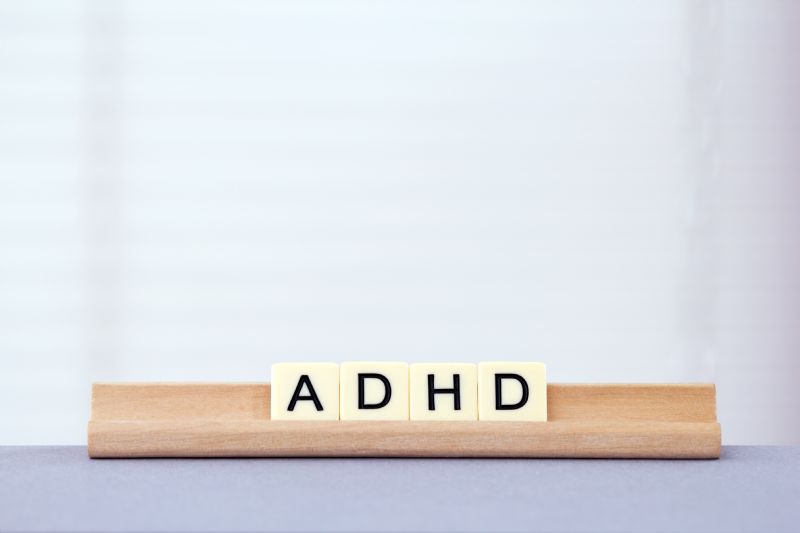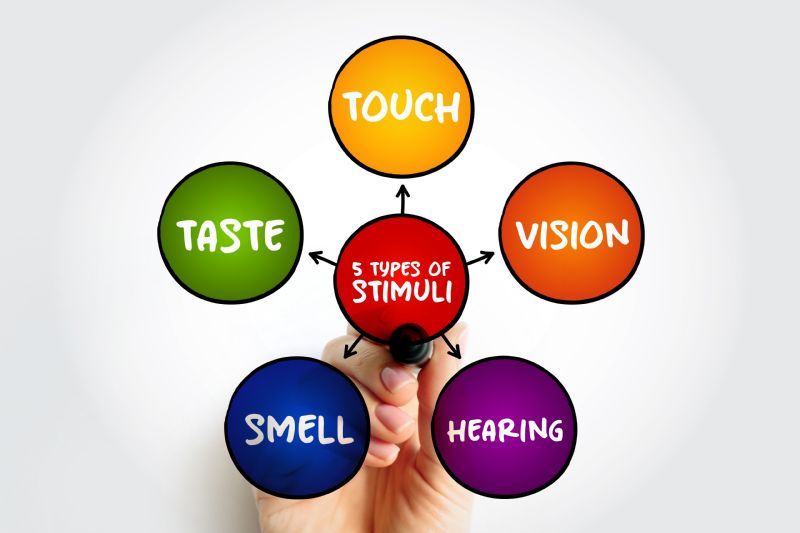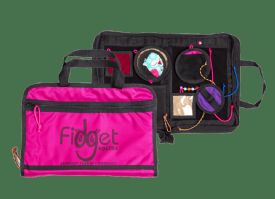 Written by Mike Price, OT
Written by Mike Price, OT
On the rise since the late 1990s and early 2000s, the prevalence of childhood ADHD (Attention Deficit Hyperactivity Disorder) is estimated to affect 8.7 percent of US children, making it the most common childhood neurodevelopmental disorder. ADHD also affects 4.4 percent of US adults. Both children and adults living with ADHD often experience sensory processing challenges, sometimes feeling bombarded by sensory information that doesn’t seem to bother those without this condition.
Overstimulation and ADHD are closely related, often causing problems in daily life. If you or a loved one struggles with sensory overload because of ADHD, we encourage you to read further to understand better what causes this overstimulation along with helpful tips and products from our Multi-Sensory category to support you in regaining control.

Whether you have ADHD with or without sensory issues, your brain may be more susceptible to overstimulation because of how its attentional processes work. As one of the core symptoms of ADHD, the inability to pay attention may stem from the same underlying issue that makes people with this disorder more vulnerable to overstimulation, the ADHD brain tries to pay attention to everything at once. Defined as the amount of irrelevant information the brain is processing, this background noise was found to be 138 percent higher in those with ADHD than those without it. Diverging from a neurotypical brain in multiple ways, the ADHD brain also tends to be challenged with the process of moving from one thought to another, and this inflexibility can also contribute to overstimulation and becoming overwhelmed.
As a state of feeling overwhelmed by your situation, overstimulation may cause physical and emotional discomfort, creating a flight-or-fight response that can wreak havoc in your daily life. Overstimulation and ADHD can make you feel like your brain is frozen, or you’re unable to think clearly or process anything that is happening. Because children and adults with ADHD often experience the sensations around them to a greater extent, it can be quite difficult to find control over emotions and actions. Warning signs of sensory overload include headaches, light-headedness, dizziness, irritability, agitation, anxiety, heightened stress, feeling ill, faint, or nauseous, an inability to focus, restlessness, and uncontrolled emotional outbursts. Tracking these symptoms can help you better understand, avoid, and modify the triggers that cause these negative behaviors.
Although prescription medications are the most common method of treating ADHD and the overstimulation it can cause, mental health approaches like cognitive behavioral therapy can also be quite helpful in preventing sensory overload. Occupational therapy is the most frequently utilized approach for both children and adults living with ADHD, as occupational therapists, we can help recommend environmental modifications and different routines to minimize overstimulation. They may also use tools like sensory integration therapy to help those with ADHD to better prepare for and engage actively in their daily roles, responsibilities, and activities without overloading their senses. Other specific strategies and specially designed products can assist in providing support that more effectively manages overstimulation as well.

The variety of sensory aids available often helps to minimize exposure and assist in reducing the stress or anxiety those with ADHD feel from sensory overstimulation. Noise-canceling headphones, sunglasses, and earplugs reduce the amount of sensory input you receive. Weighted products like vests, blankets, and lap pads help to mitigate the uncomfortable physical and emotional feelings that usually accompany sensory overload, along with compression socks, sleeves, and other garments that provide specific pressure. Sensory devices like fidget spinners, squeeze toys, and other multisensory equipment may help both children and adults work off nervous energy and prevent overstimulation.
 | Adult Weighted Blanket View Product |
Keeping track of overstimulation events and identifying the triggers that caused them can help you devise targeted strategies to modify them or reduce exposure, reducing sensory overload. While this is easier for adults with ADHD, parents of children with ADHD can also watch for triggers and help their youngsters avoid them. Consider when and where circumstances were particularly triggering and watch for events and settings that often precede a meltdown. Sensory overload can be triggered by overstimulation of one or all of the senses, including touch, sound, sight, smell, taste or texture of food, body position, and balance or movement.

Learning relaxation methods such as deep breathing exercises, grounding, yoga, and meditation can go a long way toward making sensory overload more manageable. Promoting calmer feelings and reducing stress, these relaxation practices are easy to learn and can be utilized in most environments. Progressive muscle relaxation uses tensing and relaxing various muscle groups in the body to help reduce tension and stress. In contrast, deep breathing practices and yoga can help calm the nervous system and improve focus.
Because sensory overstimulation can sneak up on you, it’s important to have people around you who know your sensory triggers. Planning ahead is key in sensory overload prevention, especially when others who care about you know exactly what to do if a meltdown happens, but also how to prevent it. When you have friends and family on the lookout for situations with specific stimuli that may overwhelm you, it becomes easier to modify or avoid the situation before you are overstimulated.
 | Fidget Folder Sensory Tool Bundle View Product |
Although getting a good night’s sleep is always good advice, it’s not always easy for those affected by ADHD. Research has found that 55 percent of children and 80 percent of adults with ADHD report difficulties in falling asleep and staying asleep. Practicing good sleep habits has been proven to improve symptoms in children with this disorder - behavioral sleep interventions have been demonstrated to reduce negative behaviors associated with ADHD while increasing daily functionality, the effects of ADHD medications, and working memory. Affecting every body process, healthy sleep helps those with ADHD to better manage discomfort and stress. Using amber lights and other sleeping aids is a great way to optimize your health and reduce the negative effects of ADHD.
 | Amber Light for Night with Automatic Turn On and Off Feature in Pack of 6 Units by Hooga View Product |
Children and adults living with ADHD are often prone to sensory processing disturbances that can result in overstimulation and sensory overload. As an added dimension of ADHD, sensory over-responsivity stems from the brain trying to pay attention to everything at once, while it also tends to cause inflexibility in the ability to move from one thought to another.
Thankfully, there are many strategies, practices, and support that preliminary research has found to be effective in helping to prevent overstimulation in children and adults with ADHD. Knowing the triggers that tend to cause sensory overload is key to the successful management of ADHD and the prevention of overstimulation.
Thanks for taking the time to learn more about ways to curb overstimulation with ADHD. You can find many more helpful and evidence-based articles like this at Caregiver University. Be sure to check out our Multi-Sensory selection of supportive products to help you or a loved one avoid future sensory meltdowns!

Co-Founder of Rehabmart and an Occupational Therapist since 1993. Mike has spent his professional career working in multiple areas of Occupational Therapy, including pediatrics, geriatrics, hand therapy, ergonomics and inpatient / outpatient rehabilitation. Mike enjoys writing articles that help people solve complex therapeutic problems and make better product choices.